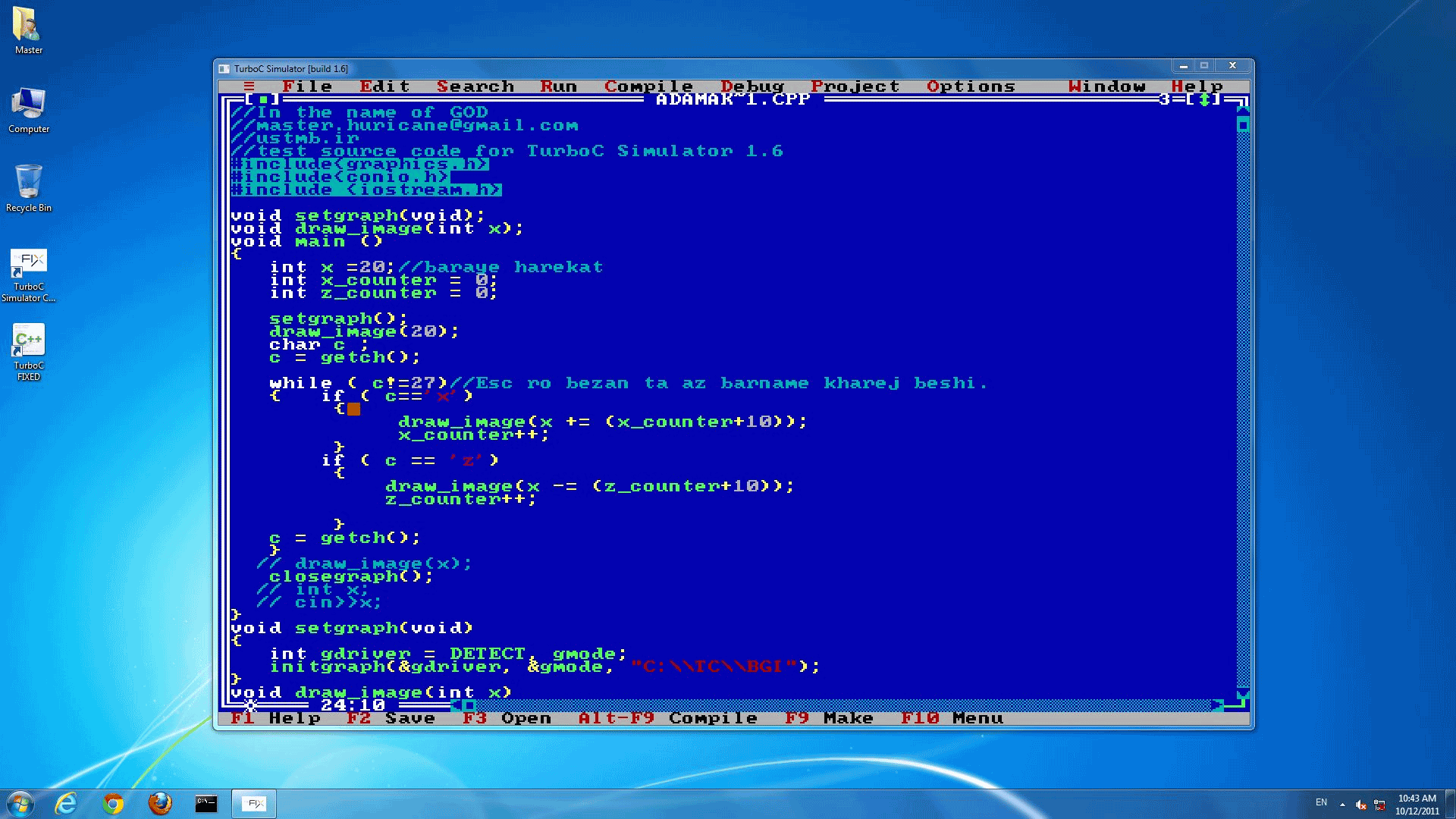
How To Debug Ac Program Using Turbo C
(dbx) helpCommand syntax: 'help ', is one of the following list:mostused, quit, alias, record, playback, history, lineedit, run,rerun, stop, step, next, trace, delete, catch, ignore,cont, return, when, goto, print, printx, printo, printd,printf, printregs, where, status, whatis, which, whereis, assign,tag, up, down, func, dump, display, list, search,edit, file, use, set, setenv, sh, stopi, conti,stepi, nexti, tracei, listobj, enable, disable, kernel, tlist,tset, tstack, call, attach, detach, plist, switch, variable,register, builtin, expression. If you have the GCC,G debugger, which you probably do. You can take your source code text (made or copied in one of the text editors) and assign it the extension you want. Say its EXAMPLE.cpp, to debug just type in the shell command linegcc -lg -Wall -pedantic -ansi -g -o EXOUT EXAMPLE.cppthis takes and debuggs EXAMPLE.cpp, and hassle-free outputs the compiled program named EXOUT (this can be named whatever you want btw).the -lg is just to tell the debugger to look in the default location for #include header files. And then -Wall is the actual debugger part. The -o is for a simple output, instead of the a.out aproach.Pe@cE.
In Visual Studio, the call stack window can be found via Debug menu Windows Call Stack. Note that you have to be in a debug session to activate this window. For Code::Blocks users. In Code::Blocks, the call stack window can be found via Debug menu Debugging windows Call stack. You can step through the program using the F7 key. Notice that when the content of a register changes, the register is highlighted. At the end of the program go to the menu bar and select Window-User screen to see what happened. Hit Esc to return to the debugger screen. Now you can try entering the sample example and start getting used to the debugger.
This also works for plain cc instead of gcc.
Latest Version:
Turbo C++ 3.7.8.9 LATEST
Requirements:
Windows Vista / Windows 7 / Windows 8 / Windows 10 / Vista64 / Windows 7 64 / Windows 8 64 / Windows 10 64
Author / Product:
NVSTECH / Turbo C++
Old Versions:
Filename:
TurboC++ for Windows 7_v3.7.8.9major_release.exe
Because of the breadth of this field, the knowledge required spans a wide spectrum of technology that includes analog and digital circuits, electronics, electromagnetics, machines, and signal processing.
MD5 Checksum:
0eb586de692f1465187eee884b4c56d7
Details:
Turbo C++ 2020 full offline installer setup for PC 32bit/64bit
Before the arrival of modern graphically-based software development environments, all the major applications were created inside DOS-based environments. Even though such old IDE platforms were surpassed over years by more capable software development tools, Borland app still has its uses today. That fact has pushed modern developers to find a way to make this old IDE accessible on modern Windows systems. Specifically, the program version 3, which has garnered a reputation for being the most stable version out of them all.
Installation and Use
It comes in a very small installation package that will copy all the necessary files to your local storage in mere seconds. Because of the age of the original software (which was developed and actively used all around the world in the late 80s and early 90s), the tool will not strain your PC configuration, no matter how old or resource-starved is. It requires a true minimum of resources and will not slow down the rest of your Windows applications a bit.
The biggest addition to the Windows version of this app is its enhanced stability. This compatibility is achieved using an emulation of the old DOS environment, thus enabling the program to operate without accessing any of the present features of modern Windows OS. By using this approach, the app can be run without any issues on many modern versions of Windows and requires just a couple of code adjustments to manage the successful launch and proper functioning of this software development program.
TurboC++ is equipped with all the features of the old IDE – a fully-featured compiler for creation of DOS apps, a powerful debugger, the DOS shell, support for breakpoints, code inspection, tracing, watches and more. The app can be run both in windowed and full-screen mode.
If you are a fan of the old Turbo C for Windows from the early 1990s, or you require to create, modify or test DOS apps, this modern IDE package represents the most streamlined, stable and easy-to-access way you can achieve that on modern Windows OS.
Features and Highlights
- Award-winning Turbo C plus plus comes to Windows OS.
- Access old-school development environment on your modern PC or laptop.
- Create, modify or test DOS apps with ease.
- Enhanced stability introduced with integrated DOSBox support.
- Full IDE package – compiler, debugger and more.
- Available on all modern Windows OS versions (both 32-bit and 64-bit) such as Windows 7, Vista, 8, 10, 2003, Server 2012, 2008, and 2008 R2.
- 100% FREE.